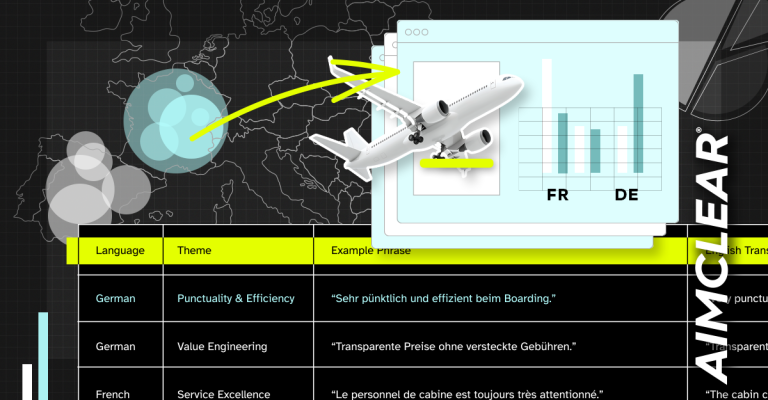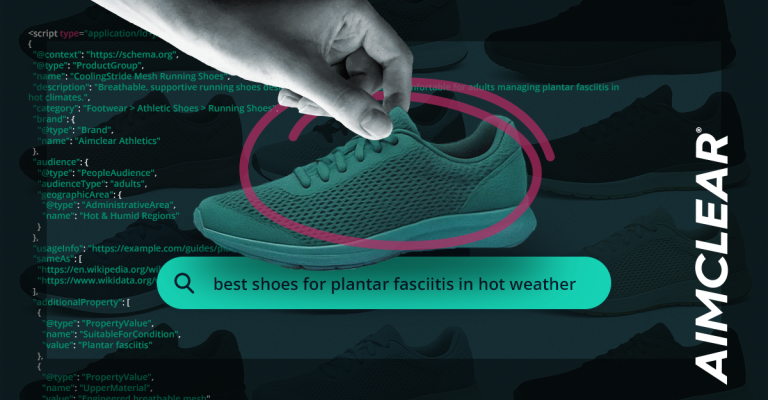Working at AIMCLEAR means we’re blessed with daily opportunities to take zoomed-out snapshots of marketing systems, from simple structures to epic enterprise-organisms. The most basic audit questions are easy. “Does this marketing system generate enough conversions or not?” “If not, then why?”
As front-line auditors there’s not always tons of time for assessment, which is actually better, even perfect. If we can’t evaluate the soundness of most marketing systems by zooming way-out to ask fundamental questions, then we’re not zoomed out enough! This post is about building true advertising personas by intentional targeting and retargeting-filtered-by-big-data. We’ll ask deep questions about marketing funnels in simpler terms.
Nearly every marketing system can be quickly reduced to a zoomed out Tao-like understanding of how that system functions, what does and does not work. It’s often elementary to diagnose roots of successes and breakdowns by examining the source of visitors and which (if any) retargeting filters are applied whilst we follow (retarget) for the conversion. Ask these questions:
- What’s the top of funnel targeting? What targeting introduces visitors to the marketing system? This applies to most every site. Even Amazon.com needs vertical visitors. Certainly the Washington Post needs visitors for any given time period. WP sells advertising. Of course they need visitors. The first question is, where do these visitors, new and returning, come from?
- What’s the bottom of funnel targeting? What do we do with these visitors after they touch our websites, for a time period? IS retargeting refined by additional data (second targeting hop) or wide open?
Let’s start with the top of the funnel first. There are three fundamental top-of-funnel advertising traffic sources in the online marketing universe:
- Search queries
- Psychographic (includes data brokers, behavioral, web analytics, Internet-of-everything & wearables – real-time-feedback & lookalikes)
- Layered search + psychographic hybrids.
Top Of The Funnel: Search As The Initial Driver
Paid and organic search is often what drives visitors to a website first in a new sequence. A user types a keyword in a box, presses “Submit,” a SERP (search engine results page) is returned. AdWords uses Google data to return paid results Google.com SERPs. That said, search is not just buying AdWords or Bing Ads.
Some search engines sell their data, which is more meaningful than meets the eye. Idiosyncratic data brokers like Chango and Magnetic Media purchase and resell third party keyword search data for DSP distribution. In other words, such services target queries later on, after the search straight up as second-hand search.
This is but one common meaning of search retargeting. Sometimes recycled search approach works similarly to traditional search. The major difference is we’re following those users with a banner in display space with full knowledge they once searched for a known KW.
Top Of The Funnel: Psychographics As The Initial Driver
Often visitors start down the funnel via psychographics. Examples of psychographic targeting include Facebook Ads targeting FB network users and Twitter Ads targeting Twitter network users. Another example is leveraging Dun & Bradstreet occupational data, BlueKai, Acxiom, Neustar, and/or other data, distributed Internet-wide, again via a trading desk (DSP).

Once visitors touch our website we can retarget. Retargeting can be filtered by either search or psychographics. It’s a deadeye tactic to create layered hybrids of search and psychographics and easy to do yourself. In fact, you should be and will be in the future. It’s your new job description.
Many of you reading this post understand Google remarketing. Remarketing is essentially retargeting to Google users in the Google network, filtered by analytic criteria. Remarketing is simply filtered retargeting. Filtered retargeting means we don’t retarget every visitor, only those meeting specific criteria. The concept of Google remarketing expanded to Internet-wide retargeting, programmatic filtered by data objects and behavior, a huge component of online marketing in the future.
There are retargeting platforms available, which provide radically focused big-data filters as opposed a wide-open concept. Look at this way. Do you want to retarget everyone who almost purchases your ecommerce option, or would you rather only retarget those who use premium credit cards online?
So, the zoomed out questions to ask of any marketing system are:
- Did we drive people to the top of the funnel by psychographic-personas, then filter subsequent retargeting (the big follow) by search? Persona >>> Retargeting Filtered By Search
- OR, did we drive users into the funnel with search, THEN filter retargeting by psychographics? Search >>>>> Retargeting Filtered By Personas
The marketing funnel is like a horse, Crap In, Crap Out! Intentional care must be paid to which potential customers are shepherded into the marketing funnel. As we follow them, we can’t miss the opportunity to further refine the first targeting hop with a second. Here are some additional tips:
- Keep top and bottom of funnel TAO close to your heart, always
- Make intentional decisions and track the mashups you’re creating between top and bottom of the funnel
- We’ve not touched upon creative. Creative is everything. Segmenting creative for each hop and where you’re at in the selling process is crucial.
- Don’t forget to factor in normal retargeting-think. The PLACE in the website where the first touch occurred is as strategic as ever
- Expand what you’ve learned using Google Remarketing and take it Internet wide using third party data via DSPs
- Remember that search includes third party (resold) search queries, which introduces search into the system via display
Nearly every advertising system can be reduced to a Tao-like understanding of how that system operates, what does and doesn’t work. It’s often rudimentary to detect the basis of wins and losses by inspecting the source of visitors and which (if any) retargeting filters are applied whilst we follow (retarget) for the conversion. Keep this in mind for a zoomed out view that’s more important than any individual channel.
Images: © Alex White, © Ig0rZh, © corepics – Fotolia
Funnel Graphic: Reed Fulghum











